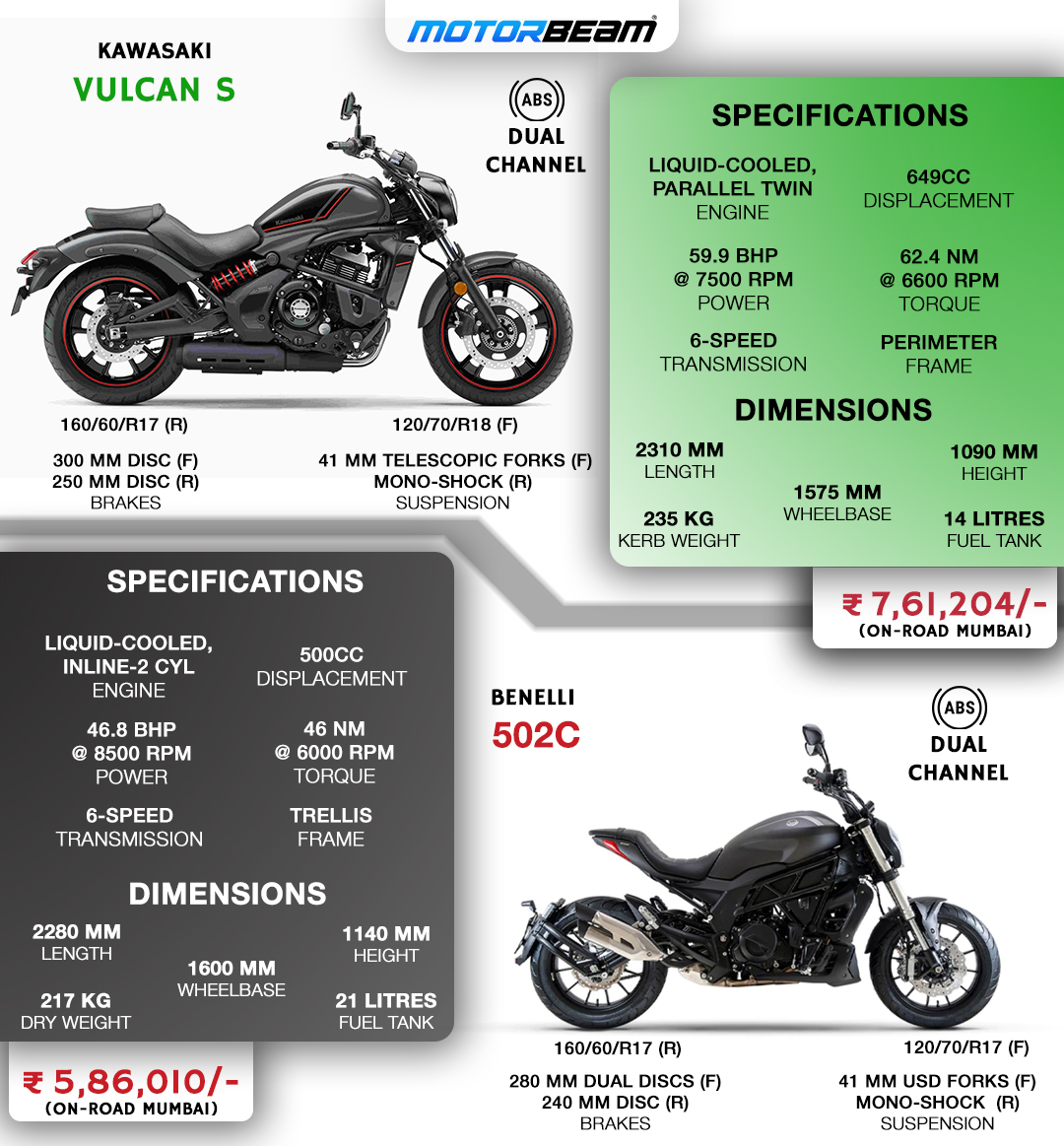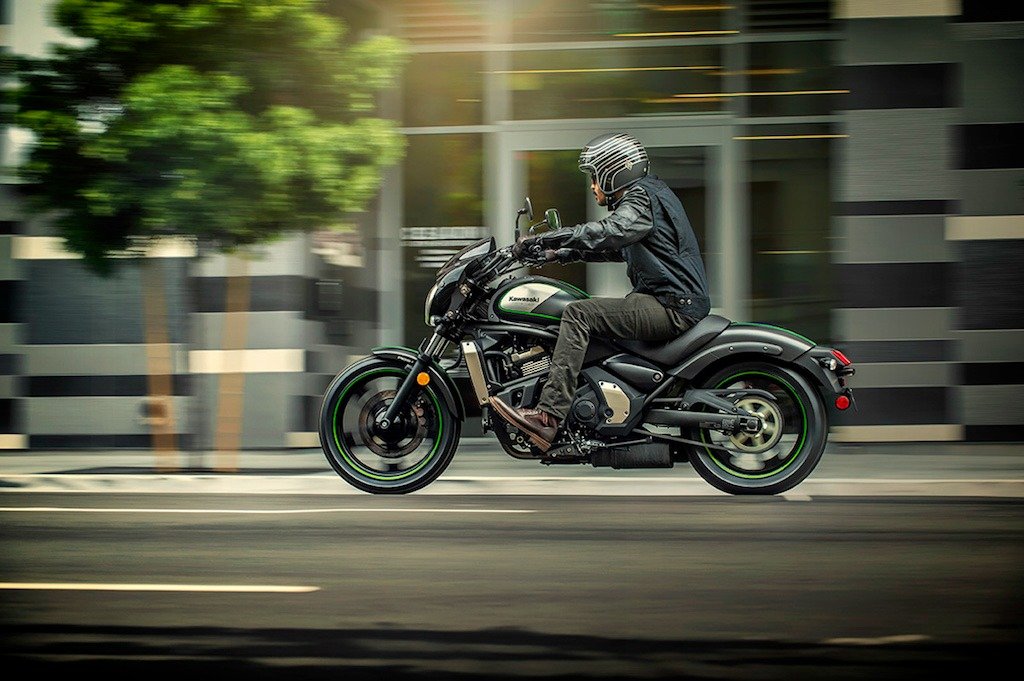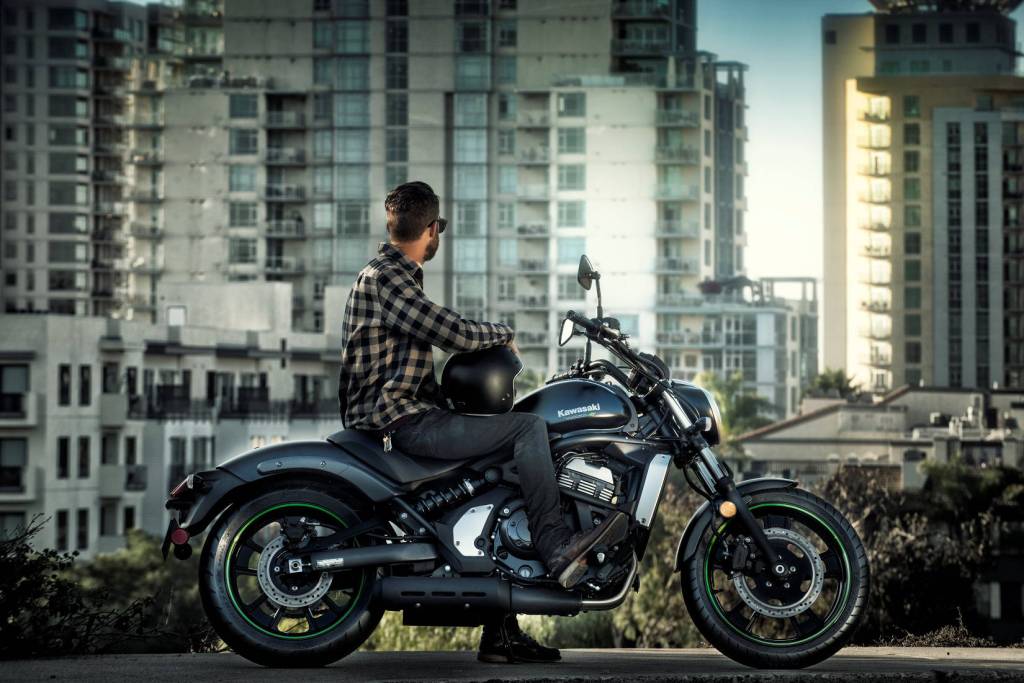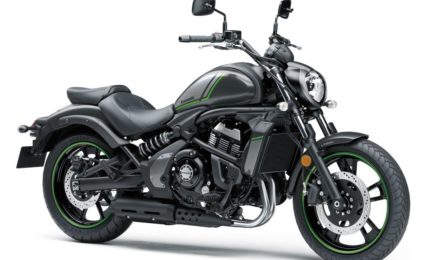
Kawasaki Vulcan S vs Benelli 502C
The middle-weight cruiser bike segment in India is very uninhabited. There are very few options to choose from, and because of this, the segment is rather ignored by most buyers. Nevertheless, we have an exciting competition going on between the Kawasaki Vulcan S and the Benelli 502C. The Vulcan has been around for a couple of years while the 502C is the latest entrant here, making its debut in recent months. We pitch these bikes against each other in an interesting and informative spec comparison and help you understand these bikes better and deeper making you choose better!
Kawasaki Vulcan S vs Benelli 502C Design
Looking at the Vulcan S, one can easily conclude that it is a cruiser bike as the design carries the cruiser genes. Although for BS6, nothing has changed in terms of design. The bike continues with its unique shaped headlamp which looks quirky however, it is a halogen unit. The tank has a conventional teardrop shape which suits the relaxed nature of the Vulcan. Further down, the engine fins are highlighted with ornamental silver inserts, followed by an offset mono-shock, finished in red. The twin-exhaust pipes are finished in chrome and join the rather long underbelly exhaust which is finished in plain matte black treatment. In comparison to the Benelli 502C, the Vulcan looks much longer and has a smoother body, resulting in greater road presence. However, the Vulcan does look a lot dated now.
The Benelli 502C looks astonishingly inspired by the Ducati Diavel, and enthusiasts from all around the globe are furious about it. Regardless of that, the Benelli looks like a hyper cruiser or an urban cruiser as Benelli likes to call it, as opposed to the smooth and humble Vulcan S. With the exposed frame and short tail, the Benelli looks young and full of zest. The headlamp on the 502C is an all-LED unit that has a very odd and unique shape. Moving on, the tank is quite large and has cuts and creases running all over. The rider’s seat has a huge groove which looks promising for the rider however, the pillion seat looks a bit too small to be practical by any means. Here, the taillight is integrated into the body of the motorcycle while the indicators are placed on the rear fender.
Kawasaki Vulcan S vs Benelli 502C Features
Compared to the 502C, the Vulcan feels quite bare-bones. The suspension setup on the Vulcan comprises 41 mm telescopic forks upfront and an adjustable mono-shock at the rear. Moving on to the braking and lighting setup, the Vulcan has a single 300 mm disc at the front, and halogen-based headlight and indicators while only the taillight is an LED unit. The Vulcan wears an 18-inch tyre at the front and a 17-inch unit at the back, which is also seen on the 502C. About the instrument cluster, the Vulcan gets an analogue-digital instrument cluster which feels outdated in today’s day and age. Sadly, the Vulcan also misses out on Bluetooth connectivity and navigation which, is a glaring omission considering especially after considering that is a premium cruiser.
When it comes to the feature list, the 502C has a few different things for us to note down. In terms of suspension, brakes and lighting the 502C has a slight edge over the Vulcan as it sports 41 mm USD forks up front, twin 280 mm petal discs and an all-LED lighting setup. The 502C also has a larger, 21-litre fuel tank as opposed to the 14-litre fuel tank on the Vulcan. With the new TFT instrument cluster, the Benelli looks a leap ahead of the Vulcan however this one too misses out on Bluetooth connectivity and only offers the basic ride telemetry data which defeats the entire purpose of having a TFT screen in the first place. Overall, the 502C feels fresh and new as opposed to the Vulcan S.
Kawasaki Vulcan S vs Benelli 502C Ergonomics
The USP of the Vulcan S is its ergonomics and Kawasaki is very serious about it. With ‘ERGO-FIT’ riders of all sizes and forms can customise the ergonomics of the bike according to their proportions. Nevertheless, the Vulcan S comes equipped with forward-set footpegs, and a wide handlebar, resulting in a very relaxed seating posture. What adds to the comfort, even more, are the adjustable levers placed at both ends of the handlebar. Compared to the 502C, the mirrors on the Vulcan provide a wide view of what’s behind due to their boxy shape. Coming to the seat of the Vulcan, at 705 mm it is which is a healthy 45 mm lower than the 502C making it a better deal for short riders. Not to forget the pillion seat which is a bit more spacious than the 502C.
The 502C is positioned as a city cruiser, and the ergonomics justify it. Being a cruiser, it dons forward set pegs however, the handlebar is a bit closer to the rider. Unlike the Vulcan, the 502C has a higher seat height of 750 mm which isn’t challenging by any means but if you are below 5’5″ you wouldn’t be as confident here. However, this seat offers better support to your lower back which is beneficial on longer journeys. Sadly, the Benelli offers the adjustability function for the brake lever only. Overall, the Benelli is a great choice if you will be riding solo.
Kawasaki Vulcan S vs Benelli 502C Performance
Propelling the Vulcan S is a 649cc inline-twin motor that produces 59.9 BHP of power at 7500 RPM and 62.4 Nm of torque at 6600 RPM. Evidently, the Kawasaki is much powerful and torquey than the Benelli. The gearbox on the Vulcan is a 6-speed unit assisted by a slipper clutch. This gearbox offers crisp shifts and doesn’t disappoint even while riding hard and fast. Being powered by a parallel-twin motor the exhaust has a rumbly note which gets better as the revs climb up. The Vulcan gets a 14-litre fuel tank and returns about 23-25 km/l, giving you a tank range of 336 km.
The 502C is powered by a 500cc inline-twin motor that produces 46.8 BHP at 8500 RPM and 64 Nm of torque at 6700 RPM. The 502C has a deficit of 13.1 BHP and 16.4 Nm, which is considerable. Gearing duties are done by a 6-speed gearbox however, there’s no slipper clutch here which is a slight bummer. Refinement wise, both bikes are comparable and it’s difficult to choose the better bet. What makes the 502C desirable is that it delivers a better fuel economy of 27 km/l and with a massive 21-litre fuel tank the riding range lies at 567 km, which is 231 km more than the Vulcan.
Kawasaki Vulcan S vs Benelli 502C Handling
In the department of riding dynamics and handling, the Vulcan is a bit laid back. The telescopic suspension offers good high-speed stability but lacks the instant feedback and confidence of a USD setup. As the Vulcan is based on a perimeter frame chassis, it has good highway manners but despite having a shorter wheelbase by 25 mm, it doesn’t feel as nimble and agile as the 502C because it is longer by 30 mm. The Vulcan weighs in at 235 kg which makes it heavier by 19 kg. However, the weight is smartly distributed, making it quite manageable. The biggest issue with the Vulcan is its low ground clearance of 130 mm, making the Vulcan more prone to scraping its belly on speedbumps and potholes.
Having a USD suspension setup, the Benelli 502C makes for a steady highway cruiser and a sharp, feedback rich bike in the twisties. Although the Benelli has a longer wheelbase, it handles fine. Underpinning the 502C is a tubular steel trellis frame, making it a better bet for the enthusiast. Adding to the touring capability is 170 mm of ground clearance which is suitable for Indian road conditions. Braking wise, the Benelli is aided by twin 280 mm discs helping it stop better and safer than the Vulcan.
Kawasaki Vulcan S vs Benelli 502C Verdict
The Kawasaki Vulcan S is priced at Rs. 7,61,204/- while the Benelli 502C is priced at Rs. 5,86,010/- The 502C offers a better overall package. Here, the Vulcan feels like an outdated product and feels due for a major facelift. The Vulcan demands a premium of Rs. 1,75,194/- which isn’t justified by the features it offers. Although both bikes aren’t perfectly equipped, we find the Benelli to be a better deal in this spec-comparison. However, Benelli’s sales and service network isn’t as wide as Kawasaki, and could pose a problem if you live in tier 2 or tier 3 towns.




